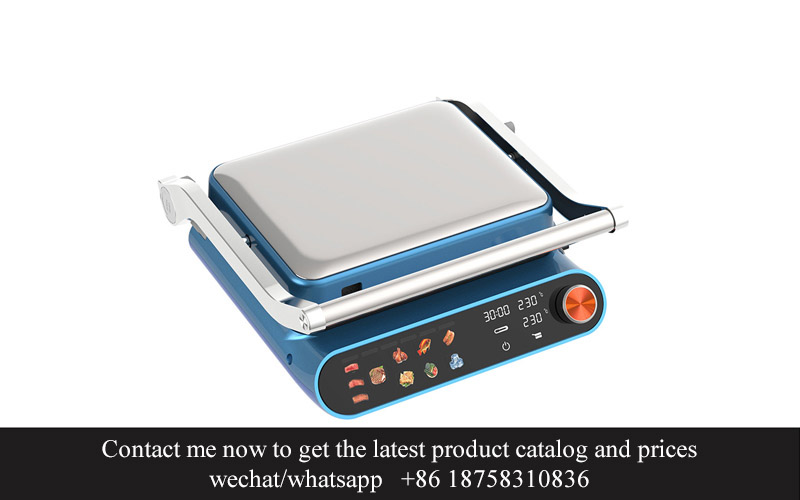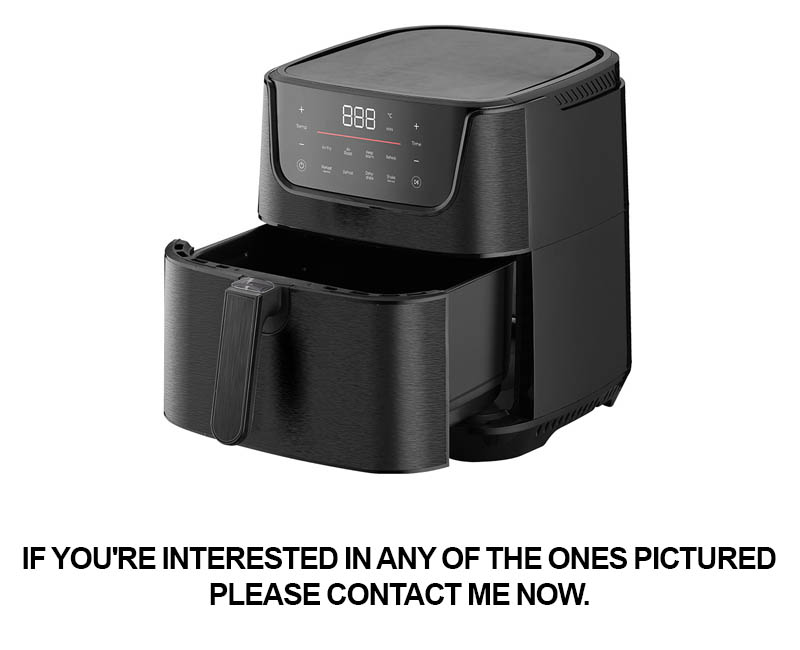Address
304 North Cardinal
St. Dorchester Center, MA 02124
Work Hours
Monday to Friday: 7AM - 7PM
Weekend: 10AM - 5PM
Address
304 North Cardinal
St. Dorchester Center, MA 02124
Work Hours
Monday to Friday: 7AM - 7PM
Weekend: 10AM - 5PM

In the fast-paced world of food service, the continuous operation sandwich grill plant has emerged as a game-changer, reshaping the landscape of quick-service dining. This innovative approach to sandwich production promises not only efficiency and speed but also a new wave of culinary excellence. As we delve into the intricacies of these modern sandwich-making facilities, it’s clear that they are more than just a trend—they represent the future of food preparation.
In recent years, the fast-food industry has witnessed a remarkable transformation with the rise of continuous operation sandwich grill plants. These innovative facilities are not just cooking up a storm; they are reshaping the way we think about sandwich production. Let’s delve into the factors driving this trend and the impact it’s having on the market.
The core of these plants lies in their ability to operate around the clock, ensuring a steady supply of freshly cooked sandwiches. This non-stop production model is a game-changer for fast-casual dining chains, as it allows for a consistent product quality that keeps customers coming back for more.
Efficiency is king in the fast-food world, and continuous operation sandwich grill plants excel in this department. With automated systems and precise cooking times, these plants can churn out hundreds, if not thousands, of sandwiches per hour. The result is a significant reduction in wait times for customers, making the dining experience more enjoyable and less frustrating.
The technology behind these sandwich grills is nothing short of revolutionary. Modern grills are equipped with sensors that monitor cooking temperatures and times, ensuring that every sandwich is cooked to perfection. Some models even feature programmable settings, allowing operators to tailor the cooking process to specific sandwich recipes.
Market trends are a key driver behind the proliferation of continuous operation sandwich grill plants. The growing demand for fast, convenient, and high-quality food has created a perfect storm for these facilities. Consumers are looking for a quick bite that doesn’t compromise on taste or freshness, and these plants deliver just that.
Data-driven insights have played a crucial role in the success of these sandwich grill plants. By analyzing sales data, customer feedback, and operational metrics, these plants can optimize their production processes to meet demand and enhance the customer experience. The result is a more efficient and responsive operation that can adapt to changing market conditions.
Success stories are popping up across the globe, with sandwich chains investing in continuous operation sandwich grill plants to stay competitive. One such story is the rise of a major fast-casual chain that saw a 30% increase in sales after implementing these plants. The consistent quality and speed of service have become a major draw for customers, leading to a loyal customer base.
While efficiency is paramount, health and safety are not to be overlooked. Continuous operation sandwich grill plants are designed with stringent safety protocols in mind. From automated cleaning cycles to temperature controls, these plants prioritize the well-being of both staff and consumers.
Looking ahead, the future of sandwich making is bright for continuous operation sandwich grill plants. As technology continues to advance, we can expect to see even more sophisticated cooking systems and automation features. This could lead to even greater efficiency and scalability for these plants, potentially allowing them to produce an even wider variety of sandwich offerings.
The impact on the workforce is another area worth considering. While these plants may reduce the number of staff needed on the floor, they also create new opportunities for skilled workers to manage and maintain the advanced equipment. Training programs are being developed to ensure that employees can operate these state-of-the-art sandwich grills effectively.
For investors and entrepreneurs, the potential of continuous operation sandwich grill plants is hard to ignore. With the right strategy and investment, these plants can become a cornerstone of a successful fast-food business. The key is to understand the market dynamics and to invest in the right technology and processes to ensure long-term success.
In conclusion, the rise of continuous operation sandwich grill plants is a testament to the ingenuity of the fast-food industry. These innovative facilities are changing the game by offering a combination of efficiency, quality, and consistency that appeals to both consumers and business owners alike. As the market continues to evolve, it’s clear that these plants will play a pivotal role in shaping the future of sandwich production.

In the bustling world of fast-food and casual dining, the continuous operation sandwich grill plant has emerged as a game-changer. These innovative facilities are not just about churning out sandwiches; they represent a new level of efficiency and speed in the kitchen.
The heart of these plants lies in their advanced technology. Automated systems and high-speed ovens allow for a seamless flow of raw ingredients through the cooking process. From slicing bread to adding fillings, each step is meticulously timed to ensure a rapid turnaround time without compromising on quality.
Imagine a conveyor belt that moves at a steady pace, delivering freshly sliced loaves of bread to the first station. At this point, a skilled technician, or even a robotic arm, spreads a thin, even layer of condiments and cheese. The bread then moves on to the sandwich grill, where it’s toasted to perfection in mere seconds. The process is repeated for the second slice, and before you know it, the two halves are being joined with precision.
This level of efficiency is achieved through a combination of factors. First, the continuous operation nature of these plants means that they never stop. Unlike traditional kitchens that have to pause for breaks or to switch batches, these plants operate around the clock, ensuring a constant supply of sandwiches.
The speed factor is also a cornerstone of these plants. Consider the grills themselves: they are designed to cook multiple sandwiches simultaneously, with some models able to handle up to 200 sandwiches per hour. The heat distribution is even, and the cooking time is optimized to prevent overcooking or undercooking.
But it’s not just about the speed of the grill. The entire assembly line is a symphony of time-saving mechanisms. Pre-measured ingredients are delivered to each station, reducing the time spent on preparation. Automated fillers ensure that every sandwich has the exact amount of meat, cheese, and condiments, eliminating guesswork and inconsistencies.
Moreover, the cleaning and maintenance processes are also streamlined. Many continuous operation sandwich grill plants are designed with self-cleaning features that reduce downtime for cleaning and sanitation. This not only ensures a hygienic environment but also keeps the production line moving at full speed.
The impact of this efficiency and speed is felt across the board. For the customers, it means shorter wait times and a more enjoyable dining experience. For the operators, it translates to higher productivity and the potential for increased sales. And for the industry as a whole, it’s a shift towards more sustainable and scalable food production methods.
But efficiency and speed don’t come without challenges. The design of these plants requires careful planning to ensure that the flow of ingredients and finished products is uninterrupted. Operators must also be trained to work with the new technology, ensuring that they can manage the systems effectively and troubleshoot any issues that arise.
Additionally, the fast pace can sometimes lead to an increased risk of accidents in the kitchen. As a result, these plants are equipped with safety features that include emergency stop buttons, temperature controls, and ergonomic workstations designed to minimize the risk of strain and injury.
In conclusion, the rise of continuous operation sandwich grill plants is a testament to the ingenuity of food service technology. By focusing on efficiency and speed, these plants are redefining the way we think about sandwich production. As the demand for fast, fresh, and high-quality food continues to grow, it’s likely that we’ll see even more innovations in this area, making the world of fast-casual dining even more dynamic and satisfying.

In the heart of the fast-paced culinary world, a revolution is brewing with the advent of innovative cooking technology. These advancements are reshaping the landscape of the sandwich industry, bringing efficiency and speed to the forefront like never before.
The integration of automated cooking systems has transformed the traditional sandwich-making process. Modern sandwich grill plants are equipped with machinery that can grill, toast, and prepare fillings simultaneously, significantly reducing the time it takes to produce each sandwich. This seamless integration of technology streamlines the workflow, allowing for a more rapid production rate.
High-tech grills have replaced the old-fashioned open flame models. These new grills are designed with precise temperature control, ensuring consistent heat distribution that perfectly caramelizes the bread and seals in the flavors of the fillings. The result is a perfectly toasted sandwich, every time, without the need for constant monitoring or manual adjustments.
One of the most groundbreaking innovations is the use of induction cooking technology. Induction cooktops provide a faster and more energy-efficient way to heat surfaces, allowing for quicker sandwich preparation. The immediate heat transfer to the cookware means that the bread and fillings are cooked to order in a fraction of the time compared to conventional methods.
Automation isn’t just limited to the cooking process. Sandwich grill plants are now equipped with robotic arms and automated assembly lines that can stack fillings onto the bread with pinpoint accuracy. This not only ensures consistency but also reduces the risk of human error, leading to a higher quality product.
The technology also extends to the storage and preparation of ingredients. Refrigerated drawers and ingredient dispensers are integrated into the workflow, providing easy access to fresh ingredients at the right temperature and in the exact quantities needed. This not only maintains food quality but also minimizes waste.
Innovation in cooking technology has also brought about new health and safety features. Modern sandwich grill plants are designed with fire suppression systems and emergency stop mechanisms to prevent accidents. The use of non-stick surfaces and automatic cleaning cycles ensures that the equipment remains hygienic and safe for use.
Moreover, these technological advancements have enabled sandwich manufacturers to offer a wider variety of products. The ability to quickly switch between different types of bread, meats, cheeses, and condiments means that customers can enjoy a diverse range of sandwiches, from classic deli fare to gourmet options.
The technology isn’t just beneficial for large-scale production; it’s also adaptable to smaller operations. Portable induction cooktops and compact sandwich assembly systems are making it possible for smaller sandwich shops and food trucks to benefit from the same speed and efficiency as their larger counterparts.
The future of cooking technology in sandwich grill plants is poised to bring even more innovations. Imagine a world where 3D printing technology is used to create custom sandwiches, with layers of ingredients precisely placed according to the customer’s preferences. Or a system that uses AI to predict the optimal time for restocking ingredients based on sales data.
As the sandwich industry continues to evolve, the integration of these innovative cooking technologies will undoubtedly play a pivotal role in shaping the future of fast food. The combination of efficiency, speed, and technological innovation is not just a game-changer; it’s the cornerstone of a new era in sandwich preparation.

In recent years, the market for cooking technology has seen a surge in innovation, driven by consumer demand for convenience, speed, and quality. This shift is particularly evident in the sandwich industry, where continuous operation sandwich grill plants are becoming a staple. Let’s delve into the market trends that are shaping this dynamic landscape.
The demand for fast and fresh food has grown exponentially, with consumers seeking quick service without compromising on taste or quality. This has led to a rise in the popularity of sandwich shops and fast-casual dining establishments. As a result, the market for continuous operation sandwich grill plants has expanded, with businesses recognizing the competitive advantage these automated systems offer.
One of the key trends in the market is the integration of smart technology. These sandwich grill plants are not just about cooking; they are equipped with sophisticated systems that optimize operations, predict maintenance needs, and even adapt to menu changes. The ability to integrate new items into the production line swiftly without extensive downtime is a significant draw for operators looking to stay ahead of the curve.
The emphasis on health and wellness has also played a pivotal role in the market trend analysis. Consumers are increasingly conscious of what they’re eating, and this has led to a demand for healthier sandwich options. Continuous operation sandwich grill plants are responding by incorporating healthier cooking methods, such as grilling or air frying, which reduce the need for oil and fat, thus appealing to health-conscious diners.
Sustainability is another major trend influencing the market. Operators are looking for eco-friendly solutions that minimize waste and energy consumption. Continuous operation sandwich grill plants are designed with sustainability in mind, featuring energy-efficient components and modular designs that allow for easy upgrades and replacements of parts.
The market is also seeing a rise in customization. Today’s customers expect to be able to tailor their meals to their preferences. Continuous operation sandwich grill plants are designed to accommodate this trend by offering a variety of ingredients and the flexibility to add or remove components from the sandwich at the point of sale. This not only enhances customer satisfaction but also increases the potential for upselling.
The integration of mobile and online ordering systems is another trend that is reshaping the market. Customers are increasingly using their smartphones to order food on the go, and continuous operation sandwich grill plants are responding by streamlining their operations to handle these orders efficiently. This includes everything from automated order-taking to optimized delivery routes, ensuring that the customer experience remains seamless.
The market for continuous operation sandwich grill plants is also being influenced by the global foodservice industry. International brands are looking to expand their presence in various markets, and they are bringing with them their standards for speed, quality, and consistency. This has led to a demand for automated systems that can maintain these high standards across different locations.
Lastly, the market is witnessing a trend towards convenience. With busy lifestyles becoming the norm, the need for quick and easy meal options is more pressing than ever. Continuous operation sandwich grill plants are meeting this need by providing a solution that can be scaled up or down depending on the location and customer demand.
In conclusion, the market trend analysis for continuous operation sandwich grill plants reveals a landscape of innovation, health consciousness, sustainability, customization, technology integration, and convenience. As the market continues to evolve, these trends are likely to shape the future of the sandwich industry, offering new opportunities for growth and success.

In the fast-paced world of culinary innovation, data-driven success stories have become the bedrock of many thriving businesses. From restaurants to food service operations, the ability to analyze and act on data has revolutionized the way we approach food production and service. Here are some compelling examples of how data has fueled success in various culinary ventures.
The Artisanal Pizza Parlor’s Data RevolutionOnce a local favorite known for its homemade crusts and fresh toppings, this pizza parlor took a leap into the digital age by integrating a comprehensive POS system. Sales data revealed a surge in takeout orders during peak hours, prompting the owner to invest in a more efficient delivery system. The result? A 30% increase in revenue and a satisfied customer base that appreciated the convenience.
The Quick-Serve Chain’s Menu OptimizationA popular quick-service chain used customer purchase history and preferences to refine its menu. By analyzing data from loyalty cards and online orders, the company identified trends and preferences. The introduction of a new line of healthier options, tailored to the demands of their health-conscious customers, saw a 15% increase in sales in the first quarter.
The Gourmet Coffee Shop’s Expansion StrategyA gourmet coffee shop found itself at a crossroads, deciding whether to expand its locations. Data analytics revealed that while the current shops were profitable, there were underserved markets in neighboring cities. By mapping foot traffic, competitor locations, and demographic data, the shop opened new outlets that are now outperforming the original locations, with a 20% increase in average daily sales.
The Farm-to-Table Restaurant’s Sourcing SuccessA farm-to-table restaurant relied on data to streamline its supply chain. By analyzing the yield and quality of produce from various local farms, the restaurant was able to establish long-term relationships with the most reliable suppliers. This not only ensured the highest quality ingredients but also reduced costs by 10%, allowing the restaurant to offer competitive prices without compromising on quality.
The Mobile Catering Service’s Route OptimizationA mobile catering service faced the challenge of delivering food efficiently to various events. By using GPS data and historical delivery times, the service optimized its routes, reducing travel time by 15%. This allowed the team to handle more events in a day, increasing their capacity by 25% and improving customer satisfaction.
The Bakery’s Customer Retention StrategyA local bakery noticed a decline in repeat customers. By analyzing sales data and customer feedback, they identified that some popular items were not always available. Implementing a just-in-time inventory system based on data insights, the bakery ensured that their bestsellers were consistently in stock. This small change led to a 40% increase in customer loyalty and repeat purchases.
The Vegan Café’s Targeted MarketingA vegan café sought to increase its customer base by reaching out to a broader audience. By analyzing social media engagement and survey responses, the café tailored its marketing campaigns to highlight the health benefits of veganism. This targeted approach resulted in a 50% increase in new customers within the first six months.
The International Fast-Casual Chain’s Global ExpansionAn international fast-casual chain looking to expand abroad used data to understand local market preferences. By analyzing local food trends, cultural eating habits, and competitor offerings, the chain customized its menu and marketing strategies for each new market. This strategic approach led to a 35% increase in sales in the first year of operation in a new country.
These stories illustrate how data-driven decisions can lead to significant improvements in business performance, from menu optimization to customer satisfaction and operational efficiency. By leveraging data analytics, businesses can stay ahead of the curve and create sustainable growth.

In the bustling world of high-volume cooking, maintaining health and safety standards is paramount. The sheer scale of operations in sandwich grill plants, where food is prepared and served at a rapid pace, demands meticulous attention to detail. Here’s a closer look at how these plants ensure that safety and health are at the forefront of their operations.
The heart of any high-volume cooking environment is the kitchen. These kitchens are designed with ergonomics and safety in mind, featuring non-slip flooring, well-ventilated spaces, and clear walkways to prevent accidents. Sanitation stations are strategically placed throughout, ensuring that hands and surfaces are cleaned regularly.
Modern cooking technology plays a crucial role in maintaining health and safety. Grills and cooking surfaces are often made of materials that are easy to clean and sanitize, reducing the risk of cross-contamination. Sensors and automated systems can monitor temperatures and cooking times, ensuring that food is cooked to the perfect degree without the need for constant manual oversight.
Food safety protocols are rigorous and well-documented. These plants adhere to strict guidelines set by health authorities, including regular inspections and audits. Employees undergo thorough training on food safety practices, from proper handwashing techniques to the importance of maintaining a clean work environment.
One notable innovation is the use of color-coded cutting boards and utensils for different types of food, such as raw and cooked meats. This simple yet effective method minimizes the risk of cross-contamination. Additionally, some plants have implemented “clean zones” and “dirty zones” to keep the workspace organized and hygienic.
In the realm of food storage, refrigeration units are crucial. They are not only used to preserve ingredients but also to maintain the integrity of cooked products. These units are equipped with alarms that alert staff to any temperature fluctuations, ensuring that food remains safe to consume.
Hygiene is not just about cleanliness; it’s also about preventing the spread of germs. High-volume cooking plants often use UV light sanitization systems to disinfect surfaces and equipment. Employees are also provided with personal protective equipment (PPE), such as gloves and masks, to protect themselves and the food from potential contaminants.
Safety is not limited to the kitchen. In these plants, safety training extends to all aspects of the workplace, including handling machinery and using protective gear. Emergency protocols are in place, with clearly marked exits, fire extinguishers, and first aid kits readily accessible.
The mental health of employees is also a priority. Long hours and high-pressure environments can take a toll, so these plants often provide stress management resources and regular breaks. This helps maintain a healthy workforce that is more focused and attentive to safety measures.
In the case of a spill or other emergency, quick response is key. These plants have well-trained staff who know how to handle such situations promptly and effectively. They also conduct regular drills to ensure that everyone is prepared for any eventuality.
One success story comes from a sandwich grill plant that implemented a comprehensive health and safety program. By focusing on both physical and mental well-being, the plant saw a significant reduction in accidents and a decrease in employee turnover. This, in turn, led to increased productivity and customer satisfaction.
Another example is a plant that faced a health code violation. By addressing the specific issues highlighted by the inspection and implementing additional safety measures, the plant was able to turn the situation around. The improved health and safety standards not only satisfied regulatory authorities but also bolstered the brand’s reputation.
In conclusion, the health and safety practices in high-volume cooking environments like sandwich grill plants are complex and multifaceted. They involve a combination of technological innovations, strict protocols, ongoing training, and a commitment to the well-being of both employees and consumers. Through these efforts, these plants demonstrate that safety and health are not just checkboxes but integral components of their success.

The culinary world is a dynamic landscape, constantly evolving with new trends and innovations. In the realm of sandwich making, we’re witnessing a future that’s not just about filling bread; it’s about precision, customization, and health-conscious offerings. Let’s explore the potential directions sandwich making could take.
Technology has long been a silent game-changer in the kitchen, and the future of sandwich making is no exception. From AI-driven ingredient selection to robotic assembly lines, here’s how technology might shape the sandwiches of tomorrow:
Health and wellness have become paramount in the food industry, and sandwiches are no exception. The future could see a surge in the following health-forward trends:
The environment has become a major concern, and sustainable practices are being integrated into every aspect of food production. Here’s how sandwiches might contribute to a greener future:
Cultural diversity continues to influence the global food landscape, and this is no different for sandwiches. We might see:
The role of the consumer is evolving, and the future of sandwich making is likely to reflect this shift:
As the sandwich market continues to grow, so too will the opportunities for innovation and differentiation. Whether it’s through technology, health trends, sustainability, cultural influence, or customer empowerment, the future of sandwich making is bright with potential for a diverse and dynamic landscape that caters to a wide range of tastes and needs.

The workforce in the foodservice industry is witnessing a significant transformation as the rise of continuous operation sandwich grill plants reshapes the landscape. Here’s how it’s all unfolding:
Innovative work environments are cropping up, with a focus on efficiency and speed. Workers are now trained to operate sophisticated machinery that can produce hundreds of sandwiches in a matter of minutes, a stark contrast to the traditional manual assembly line.
Adaptation to new technologies is a crucial skill. Employees must be proficient in handling high-tech grills and automated systems, which requires ongoing education and training programs. This shift has opened up opportunities for career advancement within the industry.
The nature of work has evolved. Employees in these plants often work in more controlled conditions, away from the heat and noise of traditional kitchens. This change has led to improved working conditions and reduced physical strain on the workforce.
Job roles are diversifying. While some positions are now more technical, others are becoming more customer-facing. This balance allows for a more holistic approach to service, where employees can both manage the production line and interact with customers.
The introduction of continuous operation sandwich grill plants has also brought about a reevaluation of skill sets. Soft skills such as teamwork, communication, and problem-solving are becoming increasingly important, as these plants often operate around the clock and require a coordinated effort to maintain smooth operations.
Safety and hygiene training are paramount. With the emphasis on high-volume production, ensuring that all workers are well-versed in food safety and sanitation protocols is essential. This focus has led to a more stringent approach to health and safety training programs.
The rise of these plants has also sparked a debate about job security. While some fear the loss of traditional kitchen positions, others see it as an opportunity to create new roles that are less physically demanding and more focused on the operational side of the business.
Employees are finding new ways to engage with their work. The fast-paced environment and the use of modern technology can be both challenging and exciting, fostering a culture of innovation and continuous improvement.
As the industry grows, so does the demand for specialized roles. This includes technicians who can maintain and repair the advanced cooking equipment, as well as managers who can oversee large-scale operations.
The workforce is becoming more mobile. With the expansion of continuous operation sandwich grill plants, workers have the opportunity to move between locations, gaining experience and exposure to different operational models.
The impact on the workforce is a two-way street. While these plants are changing the way food is prepared, they are also changing the expectations of employees. A more collaborative and tech-savvy workforce is emerging, ready to embrace the future of sandwich making.

Navigating the investment landscape for continuous operation sandwich grill plants is a nuanced endeavor that requires a keen eye on market dynamics and technological advancements. Understanding the potential return on investment (ROI) and the operational complexities is crucial. Let’s delve into the key considerations for those contemplating such an investment.
The Efficiency EdgeContinuous operation sandwich grill plants offer a significant efficiency edge over traditional sandwich shops. With automated systems and high-speed cooking processes, these facilities can churn out sandwiches at a remarkable pace. This not only appeals to fast-food consumers but also presents a unique opportunity for investors looking to capitalize on the growing demand for quick, convenient meals.
Market Demand and Growth ProjectionsInvesting in a continuous operation sandwich grill plant hinges on understanding the market demand. With the rise of the fast-casual dining segment, there’s a surge in consumer preference for quick-service restaurants that deliver quality food at a reasonable price. Growth projections for this sector are robust, and investors who enter the market early can position themselves to benefit from this upward trajectory.
Technological Integration and MaintenanceThe heart of a continuous operation sandwich grill plant lies in its technology. From automated ingredient dispensers to high-speed grills and conveyor systems, these plants are a marvel of modern innovation. However, this technology comes with a price—both in terms of the initial investment and ongoing maintenance. Investors must weigh the costs of integrating and maintaining such sophisticated systems against the potential for increased productivity and reduced labor expenses.
Operational ChallengesOperating a continuous operation sandwich grill plant is not without its challenges. Ensuring that the equipment runs smoothly and that the quality of the sandwiches meets high standards requires a well-trained staff and a robust quality control process. Investors need to be prepared for the operational complexities, including the need for skilled labor and the constant need for process optimization to avoid downtime and product defects.
Supply Chain and Inventory ManagementThe success of a continuous operation sandwich grill plant is heavily dependent on a reliable supply chain and efficient inventory management. The ability to source ingredients quickly and efficiently is crucial to maintain the high-speed production environment. Investors must consider the logistics of supply chain management and the impact of any disruptions on the plant’s operations.
Regulatory Compliance and Food SafetyCompliance with health and safety regulations is non-negotiable in the food service industry. Continuous operation sandwich grill plants must adhere to stringent standards to ensure food safety. This includes regular inspections, proper sanitation procedures, and adherence to food handling protocols. Investors must be aware of these requirements and factor in the costs of compliance into their investment strategy.
Economic Viability and ROIOne of the most critical aspects of investing in a continuous operation sandwich grill plant is the economic viability. The ROI can be substantial if the market is well-researched, the business model is sound, and the operational processes are efficient. However, investors must conduct thorough financial analysis, including cost-benefit analysis, to determine if the investment aligns with their financial goals.
Marketing and Branding StrategiesThe success of any restaurant hinges on its ability to attract and retain customers. For continuous operation sandwich grill plants, effective marketing and branding strategies are essential. This involves creating a unique value proposition, engaging with the target audience through social media and other digital platforms, and possibly exploring partnerships with other businesses to expand the brand’s reach.
Risk ManagementAs with any investment, there are risks involved. Market saturation, changing consumer preferences, and unforeseen economic downturns can impact the performance of a continuous operation sandwich grill plant. Investors must develop a comprehensive risk management plan that includes diversification strategies, contingency funds, and the ability to adapt to market changes swiftly.
In conclusion, investing in continuous operation sandwich grill plants is a multifaceted decision that requires a deep understanding of the market, technological integration, operational efficiency, supply chain management, regulatory compliance, and financial acumen. By carefully considering these factors, investors can make informed decisions that have the potential to yield significant returns in a rapidly evolving industry.

In the ever-evolving culinary landscape, the advent of continuous operation sandwich grill plants has reshaped the way we think about food service. As these innovative facilities rise, they bring about a wave of opportunities and challenges for investors and the workforce alike. The implications are profound, from efficiency and speed to the very fabric of our food industry’s workforce. Let’s delve into the intricate dance of investing in these cutting-edge plants and the ripple effects they create.
The automation and precision of continuous operation sandwich grill plants are a game-changer. They reduce the need for human intervention, ensuring consistent quality in every sandwich. For investors, this means lower labor costs and higher productivity. However, it also raises questions about the future roles of kitchen staff. The need for specialized training and a reevaluation of skill sets becomes apparent, leading to a workforce that must adapt or find new opportunities.
The market potential for these plants is immense. As the demand for quick and fresh food continues to soar, investors can tap into a trend that’s not just a fad but a fundamental shift in consumer preferences. The key is understanding the market dynamics and identifying locations where such plants can thrive. Whether in bustling urban centers or busy transportation hubs, the opportunity for growth is vast, provided that the investment is strategic and the market research is thorough.
Safety is paramount in high-volume cooking environments, and these plants are designed with health and safety at their core. Advanced hygiene protocols and state-of-the-art equipment reduce the risk of contamination and ensure that the food produced is not only delicious but also safe for consumption. For investors, this means a lower risk of liability issues and a better reputation in the industry. For employees, it translates to a safer work environment and peace of mind.
The technology driving these sandwich grill plants is nothing short of revolutionary. From automated slicing machines to precise temperature controls, the innovation is a blend of modern engineering and culinary artistry. This technological leap has implications beyond the kitchen floor; it influences the way we approach food preparation and delivery. Investors who recognize this trend are positioned to lead the charge in redefining the food service industry.
The workforce transformation is gradual but undeniable. As these plants take hold, traditional kitchen roles are evolving. There’s a shift from manual labor to more technical, supervisory positions. This necessitates a workforce that can embrace new technologies and adapt to changing responsibilities. Investors looking to capitalize on this trend should consider the long-term implications on their staff and invest in training programs to ensure a seamless transition.
In the realm of sustainability, continuous operation sandwich grill plants are a step in the right direction. With energy-efficient designs and reduced waste, these plants offer a more eco-friendly approach to food production. This aligns with the growing consumer demand for sustainable practices. For investors, this is not just a moral imperative but a smart business decision. It can differentiate their brand and appeal to environmentally conscious customers.
The economic impact of these plants is significant. They can create jobs, from manufacturing and installation to maintenance and operation. However, the nature of these jobs is different from the traditional kitchen work. They require technical expertise and a willingness to learn. Investors must consider this shift when planning their investments, ensuring that their operations are not just profitable but also capable of fostering a skilled workforce.
The regulatory landscape also plays a crucial role in the success of these plants. Compliance with food safety standards is non-negotiable, and investors must navigate the complexities of local and international regulations. This requires a team that is well-versed in legal requirements and can ensure that the plant operates within the bounds of the law.
The future of investing in continuous operation sandwich grill plants is bright, but it is not without its challenges. It requires a keen eye for market trends, a commitment to safety and sustainability, and a forward-thinking approach to workforce development. As the industry evolves, investors who can anticipate and adapt to these changes will be well-positioned to reap the rewards of this emerging sector.
In conclusion, the journey of investing in continuous operation sandwich grill plants is a complex tapestry of innovation, workforce transformation, and strategic business planning. It’s a landscape where the right combination of technology, market insight, and foresight can lead to substantial gains. For those willing to embark on this path, the rewards are significant, but so too are the responsibilities to ensure that the journey is a harmonious blend of progress and ethical considerations.